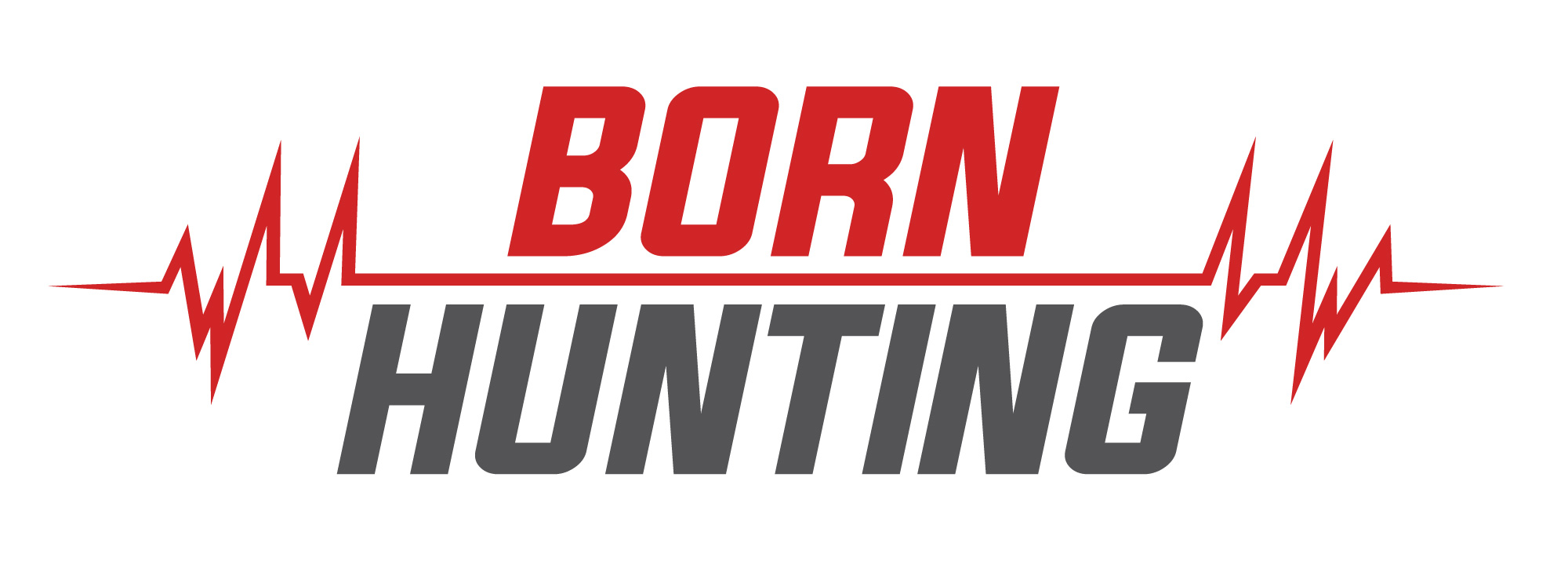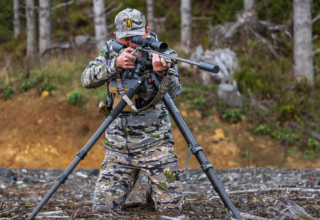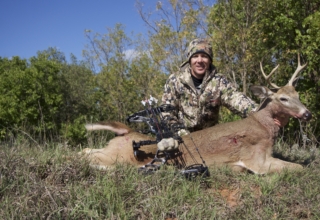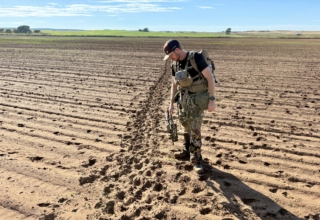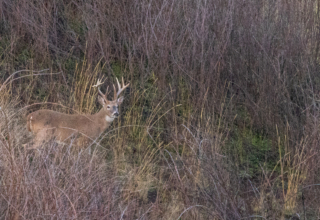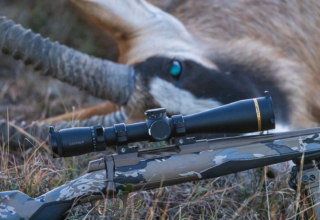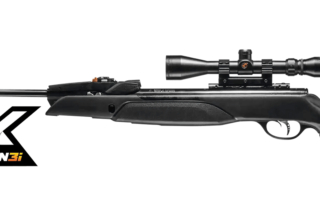He’s killed a man-eating polar bear, been held at gunpoint by the cartel, and survived insane adventures. Scott Haugen is the most interesting hunter in the world, and these are his top five most challenging hunts.
by Scott Haugen
Coming off my most extended writing hiatus in 25 years, I’ve had time to reflect. An emergency back surgery interrupted life, including spring hunting season. I’m hoping to recover in time for the fall hunting season.
For the past 25 years, I’ve made a living hunting the world. I’ve been fortunate to go on several hundred big game hunts, sometimes over 50 a year. I have the hosting of TV shows to thank for that.
For one season, we began filming on August 1 and ended on January 15. Between those dates, I was home only eight days. I missed my wife’s October birthday 13 years in a row and multiple Thanksgiving and Christmas holidays. That’s part of the sacrifices for this job, along with dealing with pain.
Having experienced so many hunts and now having time to reflect on them, I’ve gained much appreciation for my blessed life. While several hunts come to mind, these are among the five most physically grueling I’ve personally encountered.
5. Wyoming Wilderness Elk Hunt
In September 2002, I headed into Wyoming’s backcountry on horseback with childhood friend Tom Buller and his buddy Bob Wells, both Wyoming residents. The day we saddled up the horses, the thermometer registered 80º. Following an 18-mile ride, the higher we rode to our 10,000-foot campsite in the Absaroka Range, the more prominent the elk sign became.
Up and ready to go before daylight, we fed and watered the horses, then secured them for the day. Given the threat of grizzlies, we surrounded the horses with a portable electric fence.
The hike into the area was grueling. Over half the distance was negotiated by walking on blown-down pines that had burned in a fire years prior. At times, we were hesitant to shoot a bull because we were concerned that the horses would not be able to get to it because of all the down timber.
Mid-afternoon Bob arrowed a nice six point that came in bugling to his calls. I helped Bob breakdown his bull while Tom kept hunting. A few minutes after finishing Bob’s bull, I punched my tag on another six point. It went 50 yards and fell over. Tom heard the commotion and came to help.
Halfway through my bull, a bull bugled below us. Bob responded with a bugle, and two bulls fired back. The second bull was on the same ridge as us. Running into a small clearing, Tom barely had time to nock an arrow before a bull dropped in from above. Breaking into the clearing, the massive, wide-racked bull was awesome to see. At 16 yards Tom’s shot was perfect. The seven-point bull didn’t go far.
Within 300 yards we had three bulls down. Moments before dark we finished quartering and hanging the meat in trees, out of grizzly reach. The hike back to camp was tough. We arrived after midnight.
The following morning, we had camp broken down before daylight. With warm temperatures on the way, our priority was to get off the mountain and the meat into a cooler as quickly as possible.
We walked the horses within a quarter mile of the bulls. On our last trip to the horses, we each carried the heads of our bulls. Passing by a small waterfall, we paused, drank, and cooled off for the rigorous hike ahead.

We loaded the pack string with all three bulls and the camp. There was no room for us to ride, so we walked the horses 22 miles from the kills back to the trailhead.
In all, we covered 58 miles—22 on horseback and 36 on foot. While the wilderness adventure was painful and demanding work, it was one of the most rewarding hunts of our lives.
4. A Dall Sheep For Dad
In August 1993, my good friend Art Peck and I took my Dad to remote Alaska to hunt Dall sheep. We had only one day to hunt.
I was a teacher in Anaktuvuk Pass, a small Inupiat Eskimo village in the Brooks Range. I had to report for the start of school two days after the sheep season opened. This gave us one day to hike in, one day to hunt, and one day to hike out before I boarded a plane in Anchorage. Because I was an Alaska resident, Dad could hunt with me. He didn’t need a guide.
We hunted the Chugach Mountains, a place Peck knew well. For months, we worked out lifting weights, hiking, and running. We knew what we were up against. In the back of our minds, we also knew this might be Dad’s only chance to hunt Dall sheep.
We crossed the chocolate-colored Matanuska River in a small boat. Negotiating dense spruce groves for the first few hours was only a warmup. We then moved through thick barricades of devil’s club with stickers so sharp they pierced our clothes under the slightest pressure. Breaking through the thorny bush, we hit solid walls of tall willows, making the next two miles challenging and frustrating to negotiate.
After six hours, we emerged from the dense cover. We were spent. Three hours later, we reached the base of the mountains. That day, we covered 16 miles, gaining just over 5,000 feet in elevation.
We were up early the next morning. With nearly 20 hours of daylight, sleep was the last thing on our minds. Within minutes we spotted a band of 16 ewes, lambs, and young rams less than 200 yards from our tent.
Due to our brief time on the mountain, the hunt quickly transformed into one of the most physically grueling of our lives. Racing against the clock, we scaled up and down near-vertical cliffs, skirted around granite peaks, and waded through shale, covering as much ground as possible. Fifteen hours later all we had seen were a couple dozen ewes and a 3/4-curl ram. With three hours of daylight remaining, we needed the rest of the time to return to camp. As the sun slipped behind the towering peaks, Dad’s one day Dall hunt was coming to a close.
Two more hours of hiking found us coming full circle. Heading up the creek leading to camp, we stopped to rest and soak our sore feet in the icy water.
“There’s still a bit of daylight,“ said Dad. “Take your time. I’m going to head up the creek for a look at the other side of that slide,“ he pointed. Dad was my football, basketball, and golf coach in high school. I’m an only child. Dad has been my number-one hunting partner my whole life. He’s the hardest working, most positive man I’ve ever met.
Nearly to camp, I glanced up to see Dad waving to get our attention. “There’s a big ram right over the knoll, 150 yards away!“ he sputtered. Dad settled into the .30-06 and Peck confirmed the age of the ram. The moment we agreed the ram was legal, Dad shot. One was all it took.
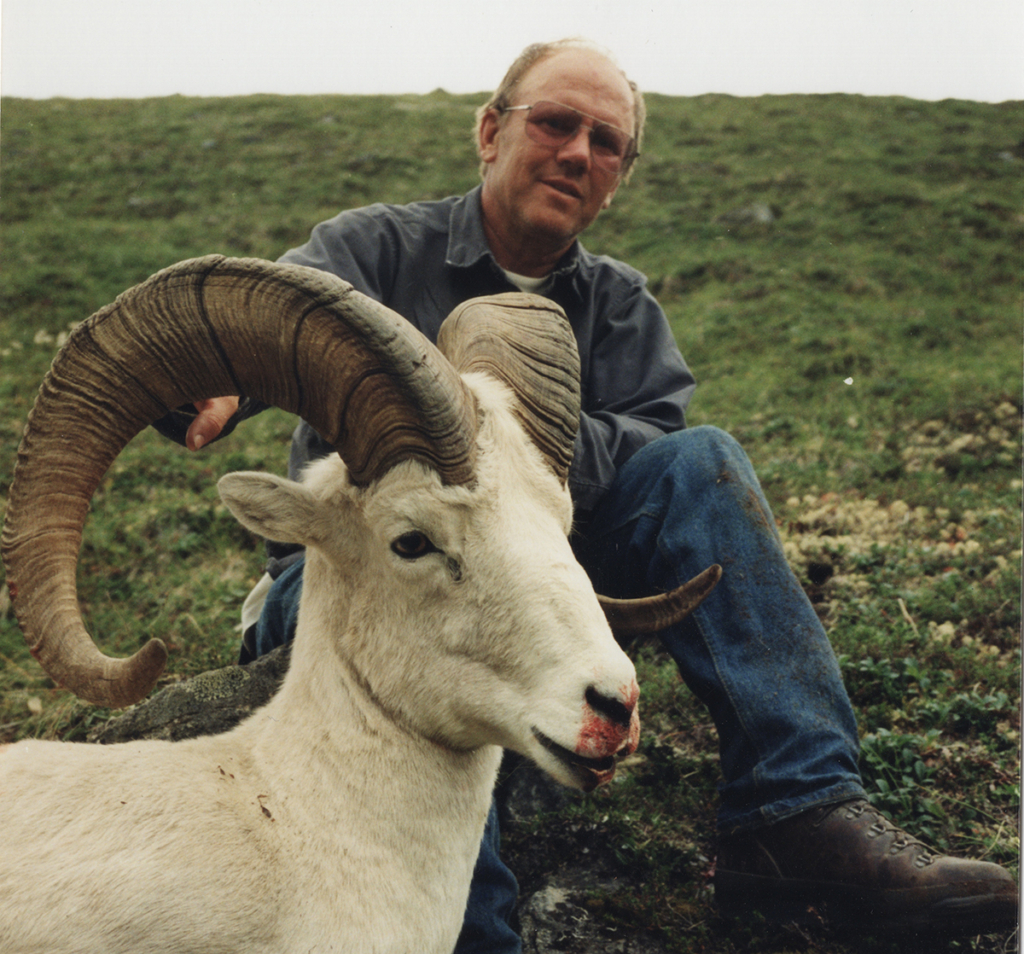
We had hunted hard for nearly 20 hours, covering many miles in some of Alaska’s most rugged land. Dad’s ram fell 175 yards from our tent on the mountain’s grassiest, most gentle terrain. We ate tenderloins for dinner.
3. Australia Water Buffalo
June 1998 saw me hunting in Australia for the first time. Since then, I’ve hunted multiple times, but none were as demanding as that first hunt for water buffalo.
On day one in Australia’s Outback, local guide Joe Wilson and I spotted a monster bull, one with horns spanning every bit of nine feet. We tracked it for three days but never saw it again. We carried bed rolls on our backs and slept when we couldn’t go anymore. Temperatures eclipsed 110 degrees Fahrenheit each day. At night, the concern was mosquitos, especially the night we stayed near a swamp.
When the sun set, the mosquitos were so loud that we had to shout to hear each other talk. There was no sleeping. We built a fire using green leaves and wet grass. Smoke was what we needed. We stood in the smoke all night, turning in it, coughing, and burning our eyes, all to keep mosquitos away. The next morning, I had over 100 bites, was swollen from head to toe, and felt terrible.
Giving up on the big bull, I shot the next bull we saw. I hit it behind the shoulder with a .425 Westley Richards, but it still went a short distance before tipping over. It collapsed in a swamp. It was my guide’s first hunt since having his hand nearly torn off by a saltwater crocodile seven months prior. He stood lookout, shooting at any saltwater crocs that came near the bloody water, while I skinned and butchered the entire bull.
The water was knee-deep, and so was the mud. Most of my cuts were made blindly in brown water. My feet were in constant motion to not get cemented into the mud. An hour into the skinning, I hopped up on the bull, sheering the mud off my lower legs. No matter how hard I pushed, most of the mud remained. That’s when I realized the mud wasn’t mud but leaches, dozens of them on each leg.

We were three days from civilization, in the middle of some of the most remote land on the planet. Using the blade of my knife, I scraped leeches from my legs. I had two bleeders, one on each heel. I packed them with mud, laid in the shade, and elevated both feet.
It was 113 degrees. We’d been out of water and food for two days. All the water in the wetlands was brackish and undrinkable. Wilson found a nearby ant nest while I tried to stop the bleeding. We’d been surviving on green ants and nuts that were hard as stones. I couldn’t bite the abdomens off of the ants fast enough. Their thirst-quenching juices tasted like fresh lemons. We ate hundreds of them.
With the bleeding stopped, I finished skinning and butchering the bull. It took over five hours. There was an Aboriginal village a few miles away. They were happy to have all the meat, and the village leader gave me a spear he crafted, one he’d killed both crocs‘ and buff‘ with, in return. At the campfire that night, we ate fresh meat and then stood in the smoke to keep away biting mosquitos. We got no sleep. I lost over 15 pounds that week.

2. Himalayan Tahr
The second hardest hunt of my life took place in New Zealand. I’ve experienced multiple hunts for Himalayan tahr and chamois over the years. I’ve never pursued them out of a helicopter, where hunters are dropped atop rugged mountains to begin the chase. And I’ve never hunted them behind a high-fence. All my tahr hunts have been on foot, often covering a few thousand vertical feet before even reaching tahr territory.
My most challenging tahr hunt was my first, with now longtime friend, Pete Dobson, of Fairlie, New Zealand. It was late June 1995. Pete, like many Kiwis, judges the success of a tahr hunt by how many miles were covered, not how many inches a bull’s horn measures.
Pete spotted a big bull and we had to cross a shale slope to reach it. I went first. I’d negotiated shale slides many times around the world. They’re dangerous, routinely claiming hunters.
Halfway across the 50 yard wide shale slope, all was going good. Then, the rock began to give way. Instantly, I was swept up in a current of moving shale. There was nothing I could do but try and gain a hold.
Sliding down the mountain, I tried digging my boots in but every rock was moving. I clawed into the rocks with both hands, grappling for a grip. Then, I tried running across the flowing shale but couldn’t move.
I was facing death and knew it. Then the sliding slowed. The shale on both sides continued flowing past me. The sliding rocks I traveled on became sparse and I could feel hard ground skip beneath my feet. I kept clawing for a hold. Finally, my boots dug in. I stopped 25 yards from a cliff that plunged hundreds of feet into rocks, snow and ice. I was seconds from death. It wasn’t over.
“How long can you hold on?“ Pete hollered. He stayed behind, as you never cross shale slopes together, in case something like this happens. “Not long!“ I shouted over the sounds of a few rocks still tumbling over the cliff. I only had an inch of hold with each boot. My fingers were numb, bloody and digging into tiny rocks on firm ground. Two of my fingernails were gone.
There was only one way out. I had to move fast because I couldn’t hold my position much longer. Quickly, I sprinted back across the shale toward Pete. The rocks held and I made it.
A few days later I killed a bull tahr, along with chamois. Later, I lost most of my fingernails and some toenails. I’ve shot a few tahrs since that hunt; all were bigger. It doesn’t matter. Any time I cross shale, this horrifying ordeal vividly comes to life, rounding out one of the most grueling weeks I’ve ever spent in the mountains.

1. Mountain Goat Quest
Four months before this, my most brutal hunt ever, I tore two discs in my lower back while bear hunting in Alaska. An MRI revealed that along with severe stenosis, bone spurs and calcium had built up around nerves. Surgery would be needed. But not now.
Two days before leaving on the goat hunt to British Columbia, I had cortisone shots into my back. They didn’t help.
On October 2, 2008—my wife’s birthday—the hike up the mountain began. We’d spotted a good goat from below. Eight hours later, we’d climbed over 3,000 feet in elevation, the most Richard, my British Columbia goat guide, had ascended in a single day.
“I can’t make it up this mountain again,” I told Richard who was half my age. “We must kill a goat today, or it’s over.” He knew I was in pain. He didn’t know how bad it was. My legs were 80 percent numb; my hamstrings felt like they were on fire. I had very little control of my feet and had to watch where each step fell. Both feet were numb. Every step felt like I was getting stabbed in the back with an ice pick. It was the most painful day of my life.
By this time I’d been in B.C. nearly two weeks. I rode horses every day. I’d killed a nice bull elk with my bow and a good moose using a rifle.
When we reached the point near where we’d seen the goat, I knew I couldn’t go much further. We reached a high point, 500 yards from where we’d last seen the goat and waited.
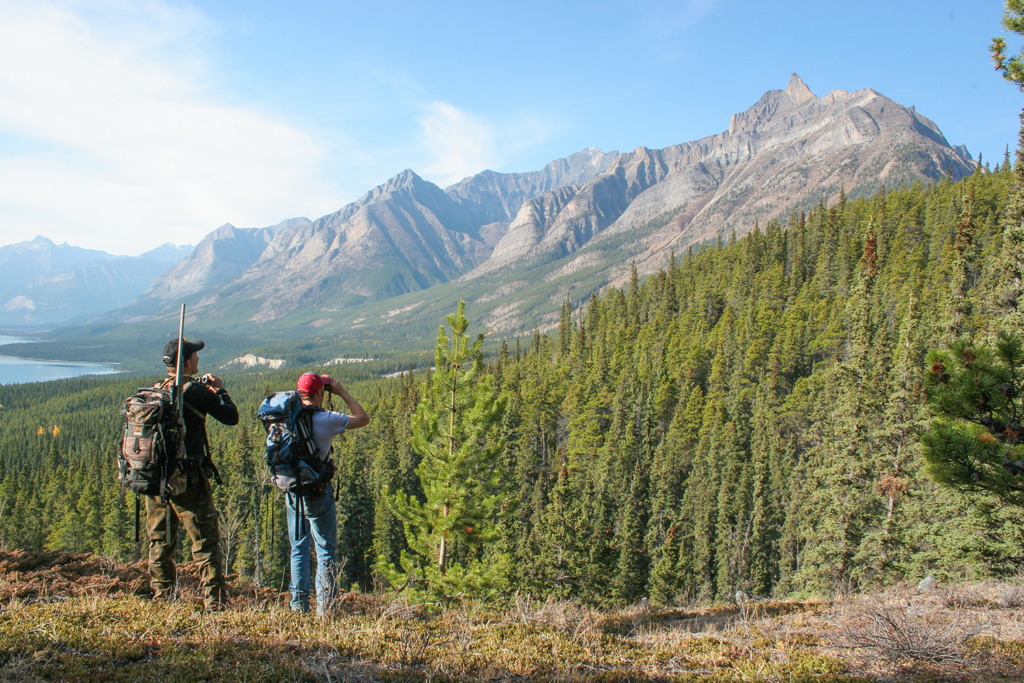
Nearly two hours later, the billy appeared 163 yards away. At the shot, the goat buckled on a gentle knob. We exchanged high-fives, happy with the goat’s resting place. Then the goat kicked and toppled over the rim, landing in a vertical, rocky, deep hole. That added several hours to the work ahead.
It was dark before we headed off the mountain. I packed the full skin and skull for a life-size mount and a few pounds of meat. Richard packed the rest of the boned-out meat, and cameraman Travis Ralls even carried some meat in his pack. We reached the horses at 2:00 a.m., rode in the dark for an hour to spike camp, and slept three hours before the six-hour horseback ride to the main camp.
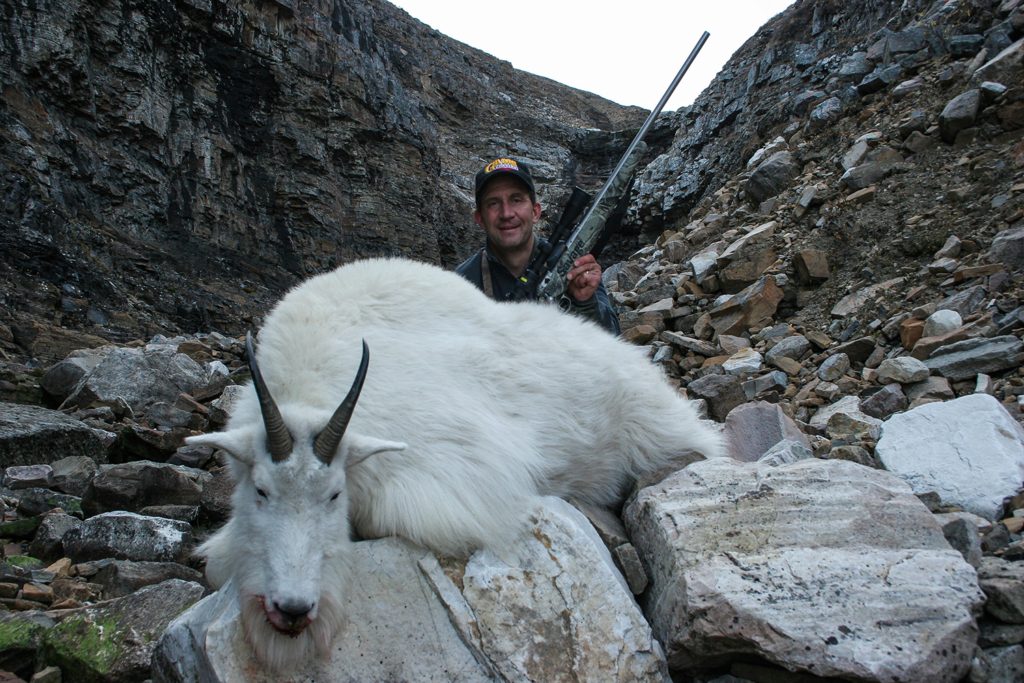
Fourteen years later, I had back surgery. I shouldn’t have waited so long. The surgeon said it was one of the worst cases she’d ever seen and that I shouldn’t have been able to walk.
Overcoming pain and adversity is part of hunting. The more you can endure, the harder you can push yourself, the more rewarding the hunt. Today, as I begin the recovery from an even more invasive back surgery in late March—one the surgeon said could take six months to a year to heal—I have nothing but time. Time to reflect on many wonderful hunts around the world. Time to dream about the day I again set foot in the woods, pursuing the dreams we, as hunters, are so fortunate to have.
